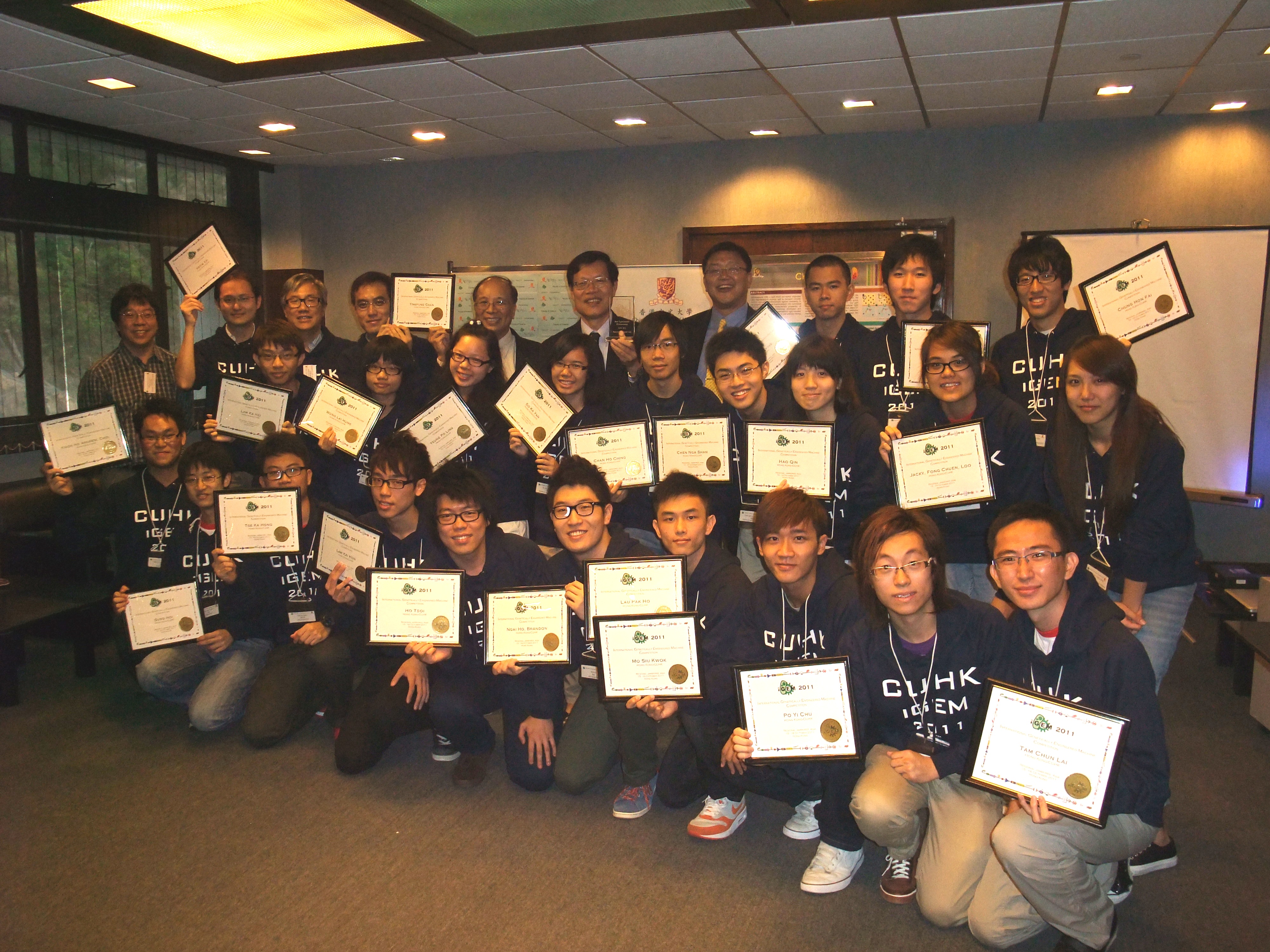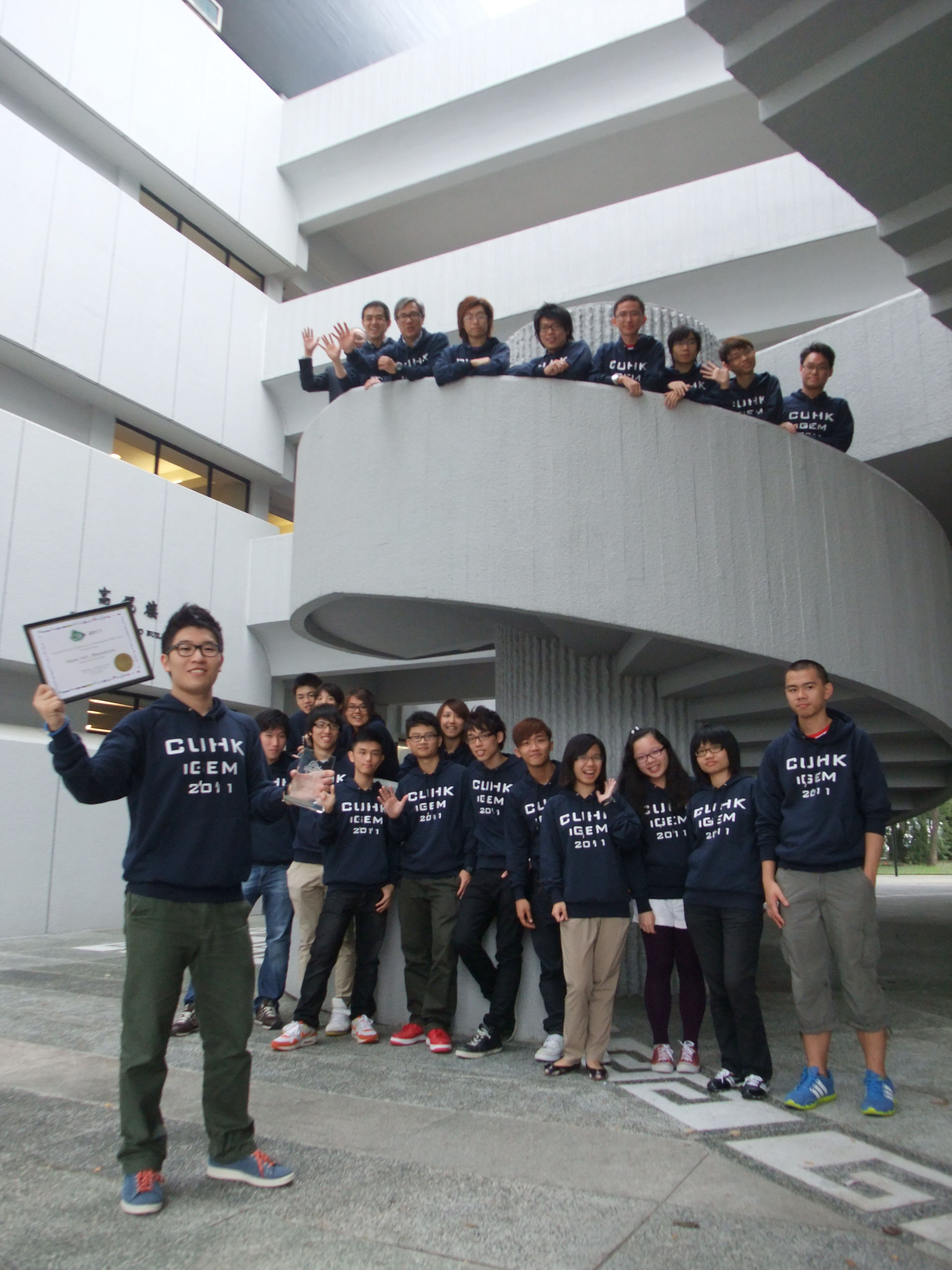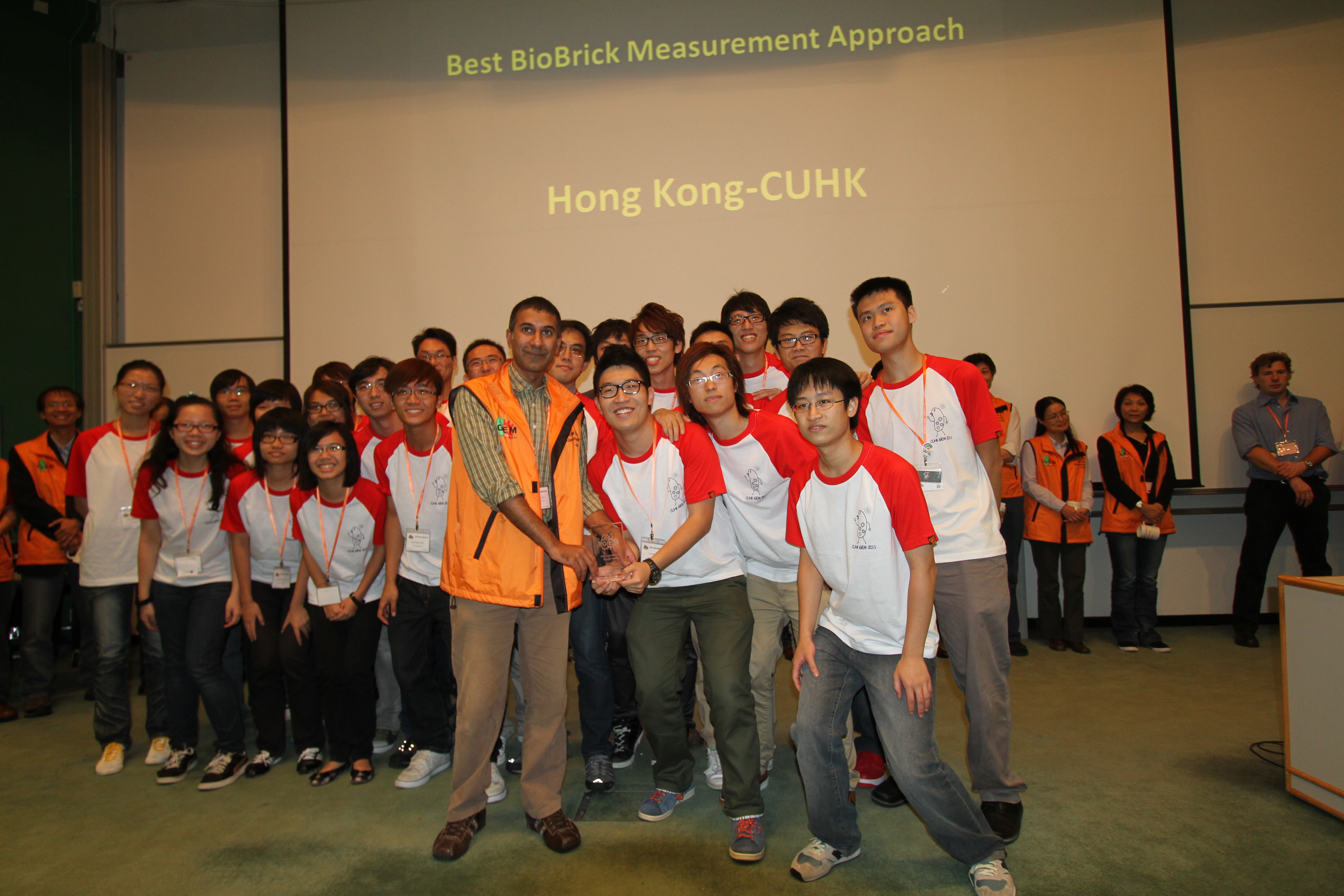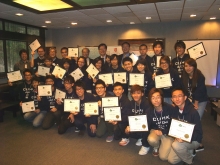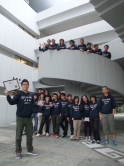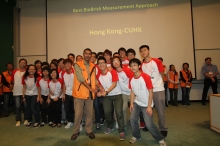CUHK
News Centre
CUHK Undergraduate Students Win Gold Medal at iGEM AsiaHeading to US Next Month for World Championship
A genetic engineering team formed by undergraduate students of science and engineering at The Chinese University of Hong Kong (CUHK) recently won a gold medal at the iGEM (international Genetic Engineered Machine) Asia Regional Jamboree. They also won the Best BioBrick Measurement Approach and the Best New BioBrick Part (Natural) awards and were qualified to participate in the world championship of the iGEM Jamboree to be held at the Massachusetts Institute of Technology (MIT) in November, competing with over 50 teams from around the world. Prof. Ng Cheuk-yiu, Dean of Science; Prof. K.F. Wong, Associate Dean of Engineering; and Prof. Chu Ka-hou, Director of School of Life Sciences, today (25 October) presented certificates to the winning students in recognition of their outstanding performance.
The CUHK team comprises seven coaches and 24 undergraduate students, including 19 life sciences students, four engineering students and one chemistry student. This is the second year that CUHK students have participated in the competition. While participants last year were all from the School of Life Sciences, engineering students from Biomedical Engineering, Computer Science and Engineering and Electronic Engineering also joined the competition this year to conduct interdisciplinary synthetic biological research. With the theme of renewable energy, the CUHK team studied how the use of solar energy could solve certain problems in two major environmental issues: water and energy. Based on the idea that a bacterial halorhodopsin can use solar energy to drive the transport of chloride ion across the membrane, the team used sunlight to drive the ion channel to concentrate ion or desalt seawater for freshwater production and create electric current to produce electricity simultaneously.
The students' work was greatly acclaimed by the panel of judges. One of the judges, Prof. Mukund Tattai of the National Centre for Biological Sciences (India), who presented the team with the Best BioBrick Measurement Approach award, commented that the team had done extensive characterizations to the BioBrick which is well ready for use by the research community. Another panel judge, Prof. Qi Ouyang of Peking University, who presented the team with the Best New BioBrick Part (Natural) award, commended the team's creativity in making use of an ion transporter found in bacteria to generate electricity.
This is the first time that regional competitions of iGEM have been held in the US, Europe and Asia. A total of 42 teams from different universities joined the competition in Asia. Since this May, the CUHK team had been devoted to preparing for the competition and developed the project completely by themselves, from defining themes, designing experiments to developing new parts, models and biobricks from scratch. They demonstrated ample team spirit and efforts included publishing a wiki page, producing posters and introducing the project and the new devices on public occasions.
Prof. Chu Ka-hou emphasized that experiential learning beyond classroom was very important in nurturing talents. During the competition, students not only got an opportunity to show their creativity, but also learned the basic experimental skills through making biobricks or software. It also helped enhance their team spirit and time management skills. A biochemistry student, Gordon Chan, said, 'iGEM offers us a rare opportunity to use some state-of-the-art technological instruments and polish skills that are beyond the formal curriculum, including experimental techniques, writing skills, leadership skills, social skills, statistical analysis and presentation skills. The heavy workload also trained up my perseverance.'
About iGEM Competition
iGEM is an annual premier synthetic biology competition for undergraduates worldwide. It was established by the MIT in 2004 to foster students' learning in synthetic biology, promote collaboration among students and nurture biology talents. Participating teams are required to specify, design, build, and test simple biological systems made from standard, interchangeable biological parts. The accomplishments of these student teams often lead to important advances in medicine, energy, and the environment. For more information, please visit http://www.igem.org.
Prof. K.F. Wong, Associate Dean of Engineering; Prof. Ng Cheuk-yiu, Dean of Science; and Prof. Chu Ka-hou, Director of School of Life Sciences (4th right to 6th right, back row) present certificates to the winning students


